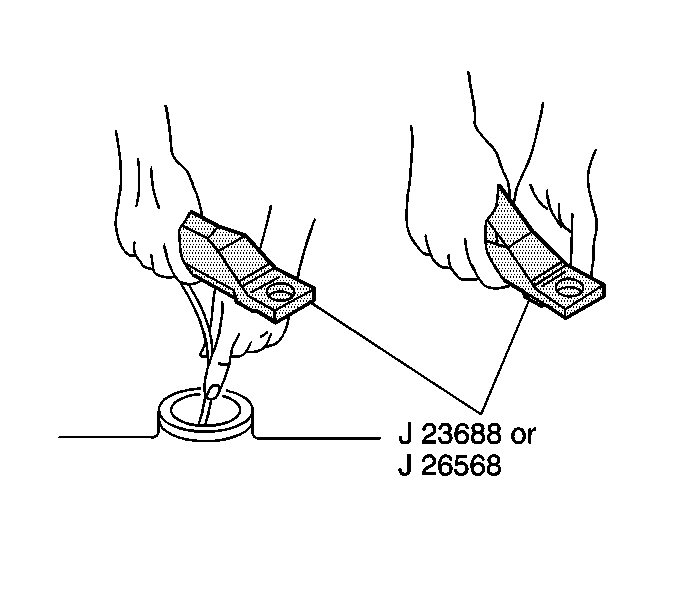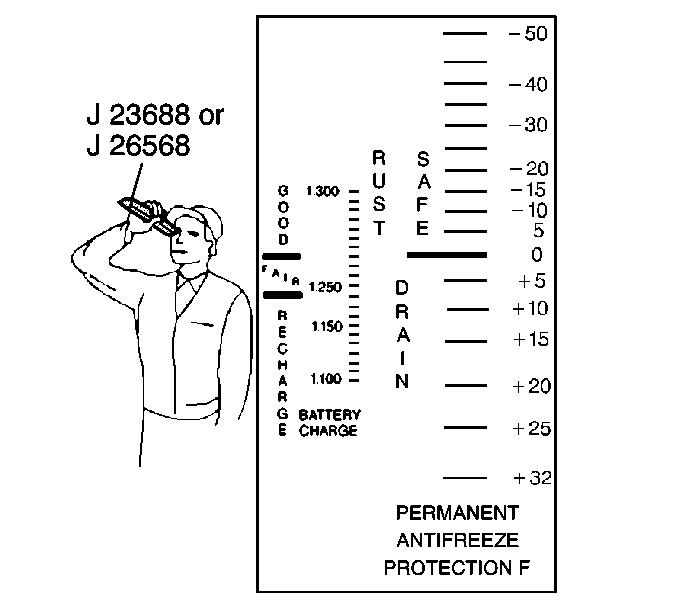For 1990-2009 cars only
Required Tools
| • | J 23688 Coolant Tester (Fahrenheit Scale) |
| • | J 26568 Coolant Tester (Celsius Scale) |
Hydrometer
Use a hydrometer to test ethylene glycol base antifreeze concentration, only. Other solutions may give an incorrect reading. Ethylene glycol base antifreeze is recommended for year around use.
Coolant Tester
- Before each use, swing back the plastic cover at the slanted end of the coolant tester, exposing the measuring window and the bottom of the plastic cover.
- Wipe the measuring window dry with a tissue or a clean, soft cloth.
- Close the plastic cover. Do not remove the clear plastic cap from the tester.

A refractometer can also check the antifreeze protection level. Unless the refractometer has a provision for temperature correction, test at the temperature for which it has been calibrated. If the coolant is warmer or cooler, the reading may be incorrect. Follow the manufacturer's directions, exactly.
- Insert the tip of the sample tube into the radiator filler neck.
- Submerge the sample tube into the coolant solution.
- Press and release the pump bulb to draw up a sample.
- Insert the tip of the sample tube into the cover plate opening.
- Press the pump bulb to inject a few drops of coolant onto the measuring surface.
- Do not open the plastic cover because water evaporation will change the reading.


Reading Procedure
Point the coolant concentration tester toward any light source and look into the eyepiece.
- The coolant protection reading is at the point where the dividing line between light and dark crosses the scale. Antifreeze protection is the scale on the right.
- The temperature scale is reversed from a standard thermometer scale.
- Readings on the lower half of the scale indicate solutions without enough protection.
- If the readings are not clear, the measuring surfaces were not cleaned and dried properly. Wipe dry and conduct a new test.
- Adjust coolant protection level as necessary.

